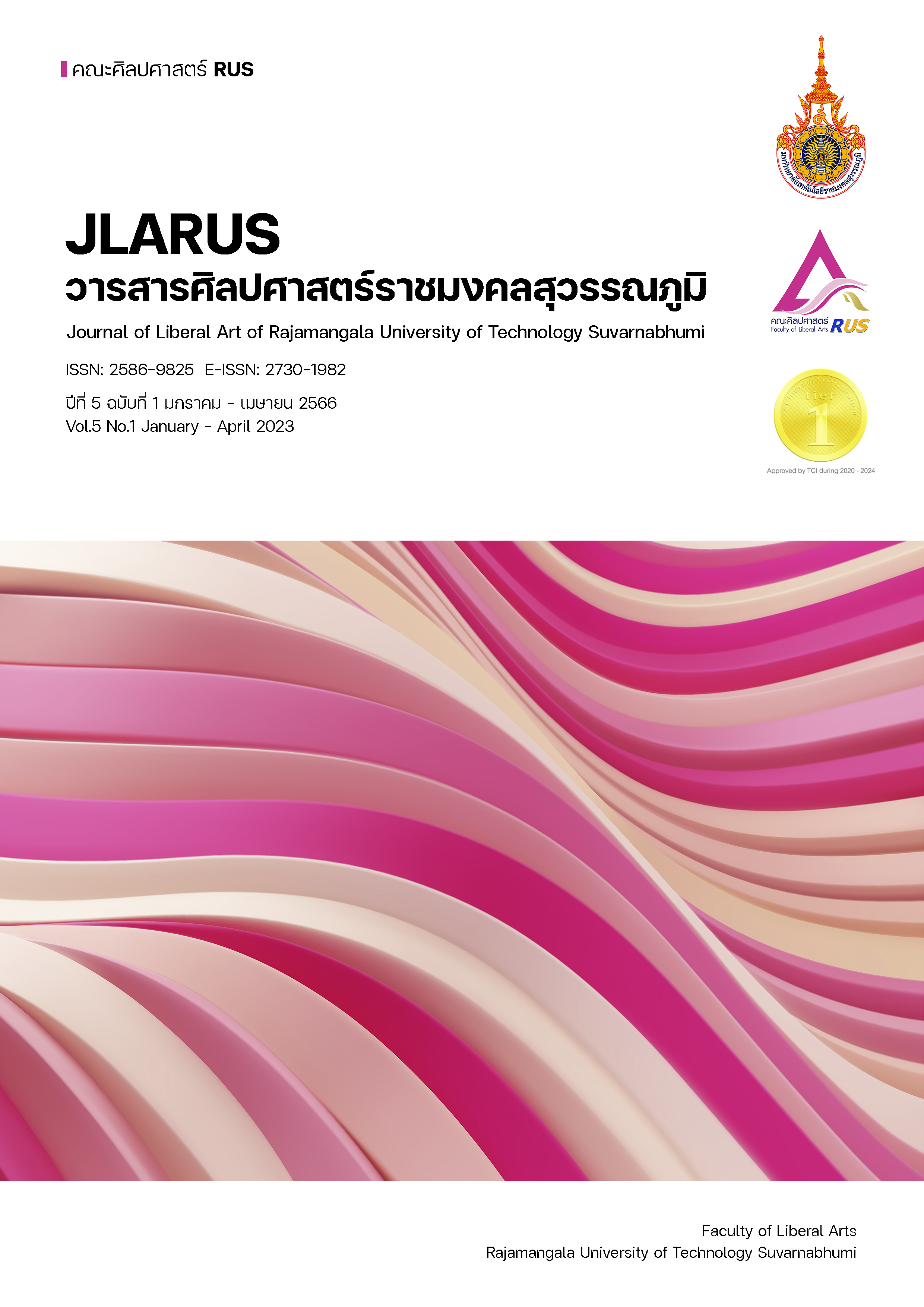THE STUDY OF CHARACTERISTICS OF WELLNESS TOURISM RESOURCES IN RANONG PROVINCE THAT MEET THE NEEDS OF THAI AND FOREIGN TOURISTS
Main Article Content
Abstract
This research aimed to study the characteristics of tourism resources suitable for health promotion in order to evaluate and classify health tourism destinations and create guidelines for designing routes and activities for health tourism in Ranong Province, as well as guidelines for the development of tourism resources for a health tourism city. This study was a mixed methodology research. The structured interview, an assessment form, and participatory action meetings were used to collect data from 73 key informants and snowballing samplings according to each research objectives.
The result showed that there were 9 categories of appropriately tourism resources for health promotion including temples and health facilities, which can be classified according to health characteristics into 6 types, mostly concentrated in Muang district of Ranong province. Mentioned tourism resources could create 2 types of routes, models, and activities, which were: 1) Tourism for health promotion and disease prevention, which can be defined as “strengthening health route” , and 2) Tourism for maintaining and rehabilitating health, which can be defined as “Fuen-Rak Route”. Guidelines of tourism resource development were: 1) improve and increase tourism infrastructures, 2) develop tourism interpretation with technology and youth volunteers, 3) increase awareness and understanding, as well as provide training to people in the community, 4) reinforce the identity of health service and service standard in the same direction, while continually increasing service potential for staff and developing health products with outstanding local materials and resources, and 5) reinforce the tourism networks with private and public partnerships in Ranong province.
Article Details

This work is licensed under a Creative Commons Attribution-NonCommercial-NoDerivatives 4.0 International License.
References
กระทรวงท่องเที่ยวและกีฬา. (2561). ความสุขของนักท่องเที่ยวในการเลือกจุดหมายปลายทาง. สืบค้น 14 กรกฎาคม 2563. จาก www.mots.go.th/main.php?fiename=index.
กัญญาวีณ์ ล่ำสัน. (2558). การจัดการทรัพยากรการท่องเที่ยวอย่างยั่งยืนในพื้นที่ปากแม่น้ำบางปะกงจังหวัดฉะเชิงเทรา. (วิทยานิพนธ์ปรัชญาดุษฎีบัณฑิต). กรุงเทพมหานคร: มหาวิทยาลัยเกษตรศาสตร์.
ชยาภรณ์ ธีรเวชพลกุล และไพฑูรย์ เจตธำรงชัย. (2561). กลยุทธ์การตลาดเพื่อส่งเสริมการท่องเที่ยว เชิงส่งเสริมสุขภาพในพื้นที่อำเภอเมืองระนอง จังหวัดระนอง. วารสารรัชต์ภาคย์, 12(27). 85-100.
ฐมจารี ปาลอภิไตร. (2560). การศึกษาศักยภาพแหล่งท่องเที่ยวรอบพื้นที่โรงไฟฟ้าบางปะกง จังหวัดฉะเชิงเทรา. กรุงเทพมหานคร: มหาวิทยาลัยศรีปทุม.
รัดเกล้า เปรมประสิทธิ์. (2558). การศึกษาศักยภาพและความสามารถในการรองรับการท่องเที่ยวอำเภอภูเรือ จังหวัดเลย. พิษณุโลก: มหาวิทยาลัยนเรศวร.
สรรค์นันธ์ ตันติอุโฆษกุล และคณะ. (2561). การพัฒนาการท่องเที่ยวเชิงสุขภาพของจังหวัดนครศรีธรรมราช ให้เป็นศูนย์กลางการท่องเที่ยวเชิงสุขภาพของภาคใต้ตอนบน. กรุงเทพมหานคร: สำนักงานคณะกรรมการวิจัยแห่งชาติ (วช.) และสำนักงานกองทุนสนับสนุนการวิจัย (สกว.).
สุรีย์ ธรรมิกบวร. (2554). การพยาบาลองค์รวม: กรณีศึกษา. กรุงเทพมหานคร: ธนาเพรส จำกัด.
Alaeddinoglu, F. & Can, AS. (2010). Identification and classification of nature-based tourism resources: western Lake Van basin, Turkey. Procedia Social and Behavioral Sciences, 19(2011). 198–207.
Global Spa Summitt. (2012). RESEARCH REPORT : GLOBAL SPA SUMMIT 2011. Wellness Tourism and Medical Tourism: Where Do Spas Fit?.
Hoheb, C. (2013). Top 10 trends wellness travel 2013. Wellness Tourism Worldwide. Retrieved on September 30, 2022. from www.wellnesstourismworldwide.com.
Mueller, H., & Kaufmann, E. L. (2001). Wellness tourism: Market analysis of a special health tourism segment and implications for the hotel industry. Journal of Vacation Marketing, 7, 5-17.
Ritchie and Crouch. (2002). The competitive destination: A sustatinable touism perspective. Wallingford, United Kingdom: CABI Publishing.


